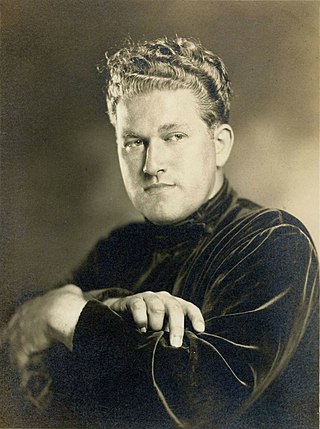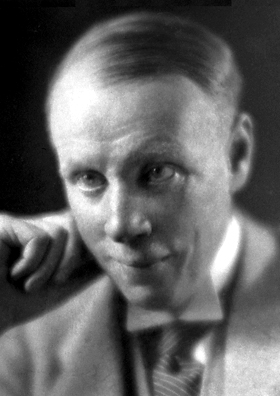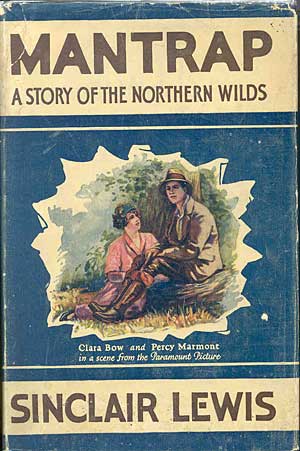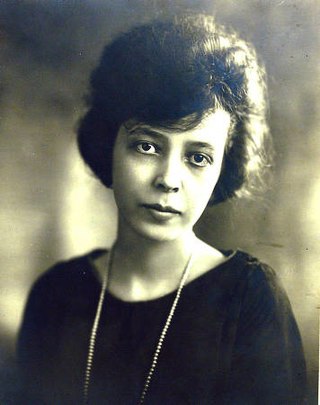Related Research Articles

August William Derleth was an American writer and anthologist. He was the first book publisher of the writings of H. P. Lovecraft. He made contributions to the Cthulhu Mythos and the cosmic horror genre and helped found the publisher Arkham House. Derleth was also a leading American regional writer of his day, as well as prolific in several other genres, including historical fiction, poetry, detective fiction, science fiction, and biography. Notably, he created the fictional detective Solar Pons, a pastiche of Arthur Conan Doyle's Sherlock Holmes.

James Branch Cabell was an American author of fantasy fiction and belles-lettres. Cabell was well-regarded by his contemporaries, including H. L. Mencken, Edmund Wilson, and Sinclair Lewis. His works were considered escapist and fit well in the culture of the 1920s, when they were most popular. For Cabell, veracity was "the one unpardonable sin, not merely against art, but against human welfare."

Harry Sinclair Lewis was an American novelist, short-story writer, and playwright. In 1930, he became the first author from the United States to receive the Nobel Prize in Literature, which was awarded "for his vigorous and graphic art of description and his ability to create, with wit and humor, new types of characters." Lewis wrote six popular novels: Main Street (1920), Babbitt (1922), Arrowsmith (1925), Elmer Gantry (1927), Dodsworth (1929), and It Can't Happen Here (1935).

Henry Louis Mencken was an American journalist, essayist, satirist, cultural critic, and scholar of American English. He commented widely on the social scene, literature, music, prominent politicians, and contemporary movements. His satirical reporting on the Scopes Trial, which he dubbed the "Monkey Trial", also gained him attention. The term Menckenian has entered multiple dictionaries to describe anything of or pertaining to Mencken, including his combative rhetorical and prose style.
Dodsworth is a satirical novel by American writer Sinclair Lewis, first published by Harcourt Brace & Company on March 14, 1929. Its subject, the differences between US and European intellect, manners, and morals, is one that frequently appears in the works of Henry James.

Elmer Gantry is a satirical novel written by Sinclair Lewis in 1926 that presents aspects of the religious activity of the United States in fundamentalist and evangelistic circles and the attitudes of the 1920s public toward it. Reverend Dr. Elmer Gantry, the protagonist, is attracted by drinking, making easy money and chasing women. After various forays into smaller, fringe churches, he becomes a major moral and political force in the Methodist Church despite his hypocrisy and serial sexual indiscretions.

Babbitt (1922), by Sinclair Lewis, is a satirical novel about American culture and society that critiques the vacuity of middle class life and the social pressure toward conformity. The controversy provoked by Babbitt was influential in the decision to award the Nobel Prize in Literature to Lewis in 1930. The novel has been filmed twice, once as a silent in 1924 and remade as a talkie in 1934.

Winesburg, Ohio is a 1919 short story cycle by the American author Sherwood Anderson. The work is structured around the life of protagonist George Willard, from the time he was a child to his growing independence and ultimate abandonment of Winesburg as a young man. It is set in the fictional town of Winesburg, Ohio, which is loosely based on Anderson's childhood memories of Clyde, Ohio.

Boosterism is the act of promoting ("boosting") a town, city, or organization, with the goal of improving public perception of it. Boosting can be as simple as talking up the entity at a party or as elaborate as establishing a visitors' bureau.

Arrowsmith is a novel by American author Sinclair Lewis, first published in 1925. It won the 1926 Pulitzer Prize. Lewis was greatly assisted in its preparation by science writer Paul de Kruif, who received 25% of the royalties on sales, although Lewis was listed as the sole author.

Main Street is a satirical novel written by Sinclair Lewis, and published in 1920.

Iain Sinclair FRSL is a writer and filmmaker. Much of his work is rooted in London, recently within the influences of psychogeography.
The zenith is the point in the sky that appears directly above the observer.

The Smart Set was an American monthly literary magazine, founded by Colonel William d'Alton Mann and published from March 1900 to June 1930. Its headquarters was in New York City. During its Jazz Age heyday under the editorship of H. L. Mencken and George Jean Nathan, The Smart Set offered many up-and-coming authors their start and gave them access to a relatively large audience.

George H. Doran Company (1908–1927) was an American book publishing company established by George Henry Doran. He organized the company in Toronto and moved it to New York City on February 22, 1908.

Fictional locations are places that exist only in fiction and not in reality, such as the Negaverse or Planet X. Writers may create and describe such places to serve as a backdrop for their fictional works. Fictional locations are also created for use as settings in role-playing games such as Dungeons & Dragons.

The "Genius" is a semi-autobiographical novel by Theodore Dreiser, first published in 1915. The story concerns Eugene Witla, a talented painter of strong sexual desires who grapples with his commitment to his art and the force of his erotic needs. The book sold 8,000 copies in the months immediately following publication but encountered legal difficulties when it was declared potentially obscene. Dreiser's publisher was nervous about continuing publication and recalled the book from bookstores, and the novel did not receive broad distribution until 1923. When The "Genius" was reissued by a different publisher, the firm of Horace Liveright, it immediately sold more than 40,000 copies.

Mantrap is a 1926 novel by Sinclair Lewis. One of Lewis's two unsuccessful novels of the 1920s, the other being The Man Who Knew Coolidge. Mantrap is the story of New York lawyer Ralph Prescott's journey into the wilds of Saskatchewan, and of his adventures there. The novel spawned two separate film adaptations, Mantrap (1926), and Untamed (1940).

Sara Powell Haardt was an American author and professor of English literature. Though she died at the age of 37 of meningitis, she produced a considerable body of work including newspaper reviews, articles, essays, a novel The Making of a Lady, several screenplays and over 50 short stories. She is central to John Barton Wolgamot's notorious book-length poem, In Sara Mencken, Christ and Beethoven there were men and women (1944), recorded by the composer Robert Ashley.

The Man Who Knew Coolidge is a 1928 satirical novel by Sinclair Lewis. It features the return of several characters from Lewis' previous works, including George Babbitt and Elmer Gantry. Additionally, it sees a return to the familiar territory of Lewis' fictional American city of Zenith, in the state of Winnemac. Presented as six long, uninterrupted monologues by Lowell Schmaltz, a travelling salesman in office supplies, the eponymous first section was originally published in The American Mercury in 1927.
References
- 1 2 3 4 Helen Batchelor. "A Sinclair Lewis Portfolio of Maps: Zenith to Winnemac". Modern Language Quarterly , December 1971, Vol. 32 Issue 4. 401–29: (Lewis's literary plan, discovery of maps, comparison with Mayfield's map)
- ↑ Updating the Literary West. Western Literary Association. TCU Press. 1997. ISBN 0-87565-175-5.
{{cite book}}: CS1 maint: others (link) - ↑ Schorer, Mark. "Sinclair Lewis: A Collection of Critical Essays. Twentieth Century Views Series".
{{cite journal}}: Cite journal requires|journal=(help) - ↑ Geismar, Maxwell David (1949-01-01). The Last of the Provincials: The American Novel, 1915–1925: H. L. Mencken, Sinclair Lewis, Willa Cather, Sherwood Anderson, F. Scott Fitzgerald . Houghton Mifflin.
- ↑ Cowley, Malcolm (1951), "The Last Flight from Main Street". The New York Times, March 25, 1951, p. 168. (Review of World So Wide)
- ↑ Sinclair Lewis (1925). Arrowsmith., chapter 2, second paragraph; online at "Sinclair Lewis: Arrowsmith, Ch. 2".
- ↑ Sinclair Lewis, Concise Dictionary of American Literary Biography: The Twenties, 1917–1929. Gale Research, 1989